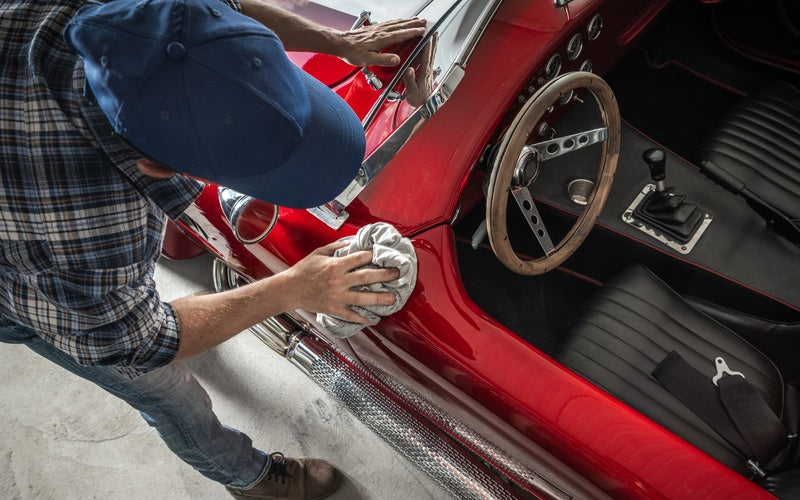Classic cars are more than just transportation—they represent history, craftsmanship, and passion. Whether you own a 1967 Mustang, a 1955 Chevrolet Bel Air, or another vintage gem, maintaining these treasures requires specialized care and knowledge.
Unlike modern cars with computerized systems and easy-to-find parts, classic cars need a unique approach. Built in an era focused on durability and repairability, they rely on owners who understand their quirks and needs. This guide covers some helpful tips for maintaining your classic car, from routine checks to long-term preservation.
Regular Maintenance Checks
Fluid Management
Classic cars require vigilant fluid monitoring since older seals and gaskets tend to develop leaks over time. You should check engine oil frequently, as vintage engines often consume or leak oil at high rates. Choose oils specifically formulated for older engines, which typically contain higher levels of zinc additives that protect flat-tappet camshafts common in classic cars.
Coolant systems in vintage vehicles often feature different materials than modern cars, including brass, copper, and iron components. These systems require coolants compatible with mixed metals to prevent galvanic corrosion. Check coolant levels regularly and inspect for leaks around water pumps, radiators, and hose connections.
Brake fluid deserves special attention in classic cars, particularly those with drum brake systems. Older brake fluid can absorb moisture and become corrosive, potentially damaging brake cylinders and lines. Replace brake fluid annually and inspect brake lines for signs of deterioration or weeping.
Tire and Wheel Care
Classic car tires face unique challenges since these vehicles often sit for extended periods. Check tire pressure monthly, as underinflated tires can develop flat spots when stationary. Rotate tires regularly to ensure even wear patterns and inspect sidewalls for cracking or deterioration caused by age and UV exposure.
Original wheels on classic cars may require special attention depending on their construction. Steel wheels can develop rust, particularly around lug holes and rim edges. Wire wheels need periodic spoke tension checks and may require professional maintenance to remain safe and true.
Brake System Assessment
Brake systems in classic cars often utilize different technologies than modern vehicles. Drum brakes require periodic adjustment to maintain proper pedal feel and stopping power. Inspect brake shoes for wear and check wheel cylinders for leaks or corrosion.
Classic cars with power brakes may use vacuum boosters that can fail over time, resulting in hard brake pedal feel. Test brake booster function by pumping the brake pedal several times with the engine off, then starting the engine while maintaining light pressure on the pedal. The pedal should drop slightly if the booster is functioning properly.

Proper Storage Techniques
Long-Term Storage
Classic cars often spend months in storage, making proper preparation crucial for preservation. Start by thoroughly cleaning the vehicle inside and out, removing any dirt, salt, or debris that could cause corrosion during storage. Apply high-quality wax to protect paint surfaces from moisture and environmental contaminants.
Fill the fuel tank completely and add fuel stabilizer to prevent gasoline degradation and tank corrosion. Run the engine for several minutes after adding stabilizer to ensure it reaches the carburetor or fuel injection system. Change the engine oil before storage, as used oil contains acids and contaminants that can damage internal engine components over time.
Environmental Control
Store classic cars in a dry, well-ventilated environment whenever possible. Moisture is the enemy of vintage automobiles, promoting rust formation and deteriorating interior materials. Use moisture absorbers or dehumidifiers in enclosed storage spaces to maintain optimal humidity levels.
Temperature fluctuations can cause condensation to form inside storage areas, so consistent temperatures are preferable to extreme variations. If outdoor storage is unavoidable, invest in a high-quality car cover designed for classic vehicles, ensuring it allows air circulation while protecting against moisture and UV damage.
Original Parts Sourcing
Authentic Components
Finding genuine parts for classic cars requires patience and knowledge. Original parts typically bear manufacturer stampings, date codes, or casting numbers that verify authenticity. Learn to identify these markings for your specific vehicle, as reproduction parts may not always match original specifications or quality levels.
Establish relationships with reputable classic car parts dealers who specialize in your vehicle’s make and model. These specialists often have access to new-old-stock parts and can provide valuable guidance about part interchangeability and authenticity verification.
Alternative Sources and Networking
Classic car clubs and online forums provide excellent resources for locating hard-to-find parts. Fellow enthusiasts often know about parts availability and can recommend trusted sources. Swap meets and classic car shows frequently feature vendors specializing in vintage automobile components.
Consider joining organizations related to your classic car. These groups maintain extensive knowledge bases about parts sources, service procedures, and restoration techniques specific to particular makes and models.
Exterior Detailing and Preservation
Paint Care and Protection
Classic car paint requires gentle care since vintage finishes may be single-stage paints without modern clear coat protection. Use pH-neutral car washing products and avoid harsh detergents that can strip protective wax layers. Wash in shade during cooler parts of the day to prevent water spotting and product streaking.
Apply high-quality carnauba wax regularly to protect paint surfaces and enhance depth and gloss. Carnauba wax provides excellent protection for classic finishes and complements the appearance of vintage paint better than synthetic alternatives.
Chrome and Trim Maintenance
Chrome components on classic cars require specialized care to maintain their lustrous appearance. Use dedicated chrome polish products rather than general-purpose cleaners, which may contain abrasives that can damage delicate chrome surfaces. Address small rust spots immediately before they spread and compromise larger areas.
Rubber and vinyl trim pieces can deteriorate from UV exposure. Apply appropriate protectants designed for these materials to prevent cracking and fading. Replace severely deteriorated trim pieces promptly to maintain the vehicle’s authentic appearance.

Interior Maintenance
Upholstery Preservation
Classic car interiors often feature materials not found in modern vehicles, including genuine leather, mohair, and unique vinyl formulations. These materials require specific care products designed for vintage automobiles. Avoid modern leather cleaners on classic car seats, as they may contain chemicals that can damage older leather treatments.
Vacuum interior surfaces regularly to remove dirt and debris that can cause wear and deterioration. Use soft brushes to clean delicate areas and avoid harsh scrubbing that might damage original materials.
Dashboard and Instrument Care
Vintage dashboards may crack or warp if exposed to extreme temperatures or direct sunlight. Use dashboard protectants sparingly, as excessive product application can create glossy surfaces that don’t match original finishes. Some classic cars feature matte or semi-gloss dashboard finishes that shouldn’t appear shiny.
Keep instruments functioning properly by exercising them regularly. Speedometers, fuel gauges, and other instruments can stick or fail if left unused for extended periods. Address instrument problems promptly to prevent more extensive damage.
Preserving Your Investment for Future Generations
These helpful tips for maintaining your classic car will ensure it remains a source of pride and enjoyment for future generations. The time and effort invested in proper care will result in reliable performance, preserved value, and the satisfaction of maintaining an important piece of automotive heritage.
Driven Racing Oil can help you preserve your automotive treasure with our hot rod motor oil. Specially formulated to protect classic engines, our oil features high levels of ZDDP additives and rust and corrosion inhibitors to keep your vehicle running smoothly. Browse our selection to maintain the life and performance of your historic car.

